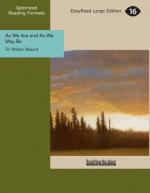There were, therefore, in this small bit of London, at least four royal palaces, besides the great houses of the nobles that I have enumerated. Half the City companies had their Halls here; and even to this day there are standing here and there one or two of the solid houses built by the merchants in the narrow streets north of Thames Street for their private residences. As late as the beginning of the present century the house now called the ‘Shades,’ close to the Swan Stairs, London Bridge, was built for his own town house by Lord Mayor Garratt, who laid the foundation stone of London Bridge. Of the old merchants’ houses, rich with carved woodwork, built with black timber round courts and gardens, not one now remains in the City. But there are one or two remaining in the old inns of Southwark and the Old Bell Inn, Holborn, Yet the last great house built in the City, the Mansion House, was itself originally built round a court.
* * * * *
You may, if you try, reconstruct Thames Street as it was before the Fire. Its breadth was exactly the same as at present. Eight stately churches stood, each with its own burial-ground, along the street. The palace of Baynard reared its gables on the right as you entered the street from the west. Lower down, on the same side, stood the great House of Cold Harbour, also gabled. The low-gabled warehouses stood round Queenhithe and Billingsgate; the Custom House was thronged with those who came to pay their tolls and clear their dues; the broad court of the Steelyard—covered with boxes, bales, and casks, some exposed, some under sheds—stretched southward, behind its three great gates. On the river-side stood its stately Hall. The Halls of the Companies, great and noble houses, proclaimed the wealth and power of the merchants. On the north side stood the merchants’ houses built round their gardens. In those days they had no country houses, and they wanted none. They could carry their falcons out into the fields which began on the other side of the City wall, or across the river in the low-lying lands of Bermondsey and Redriffe.




